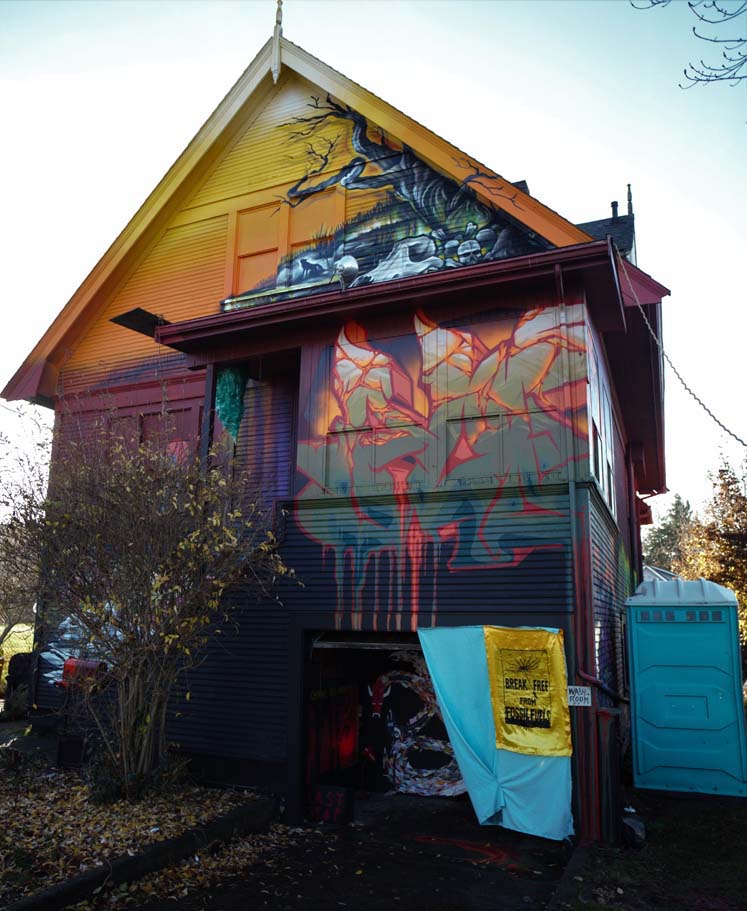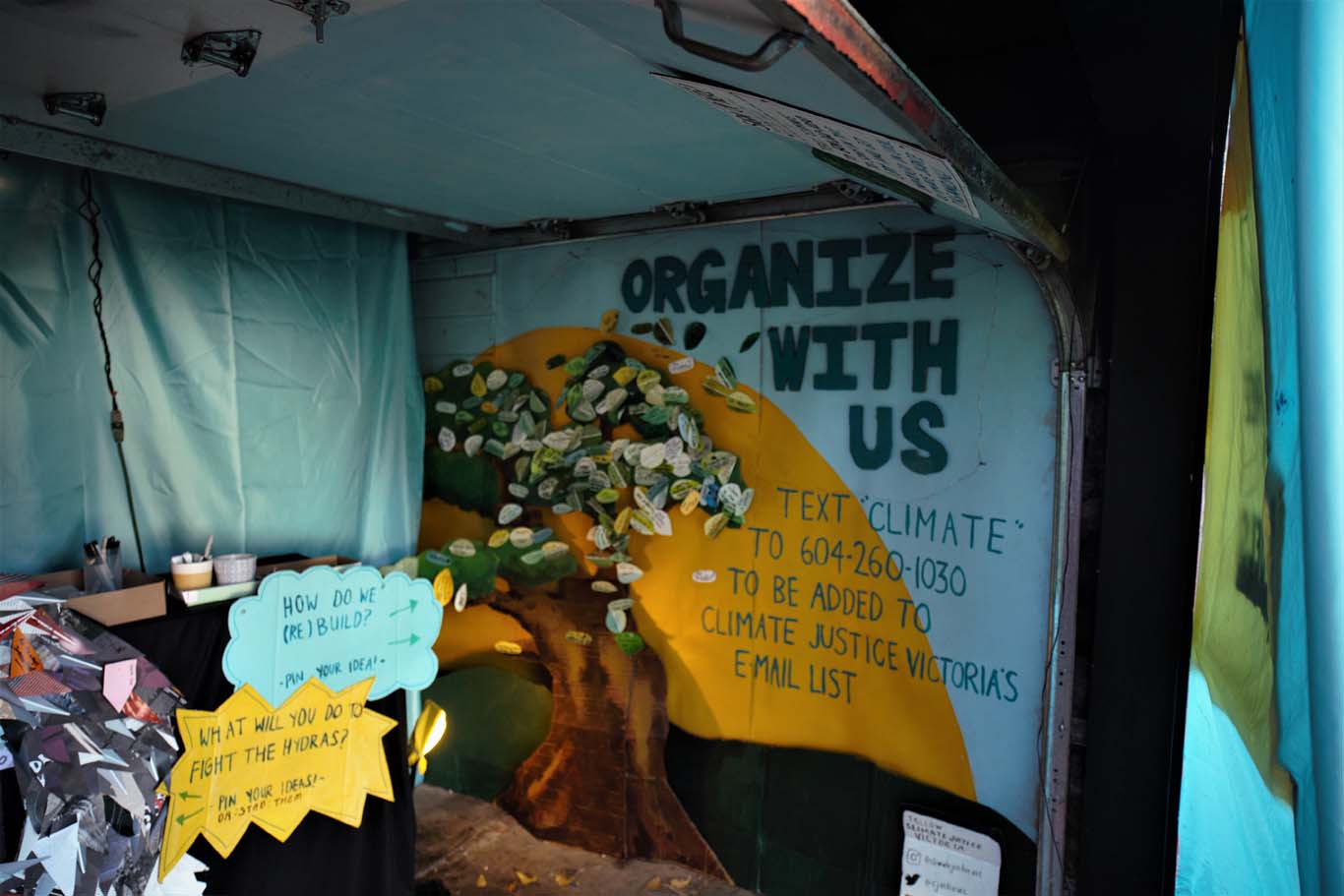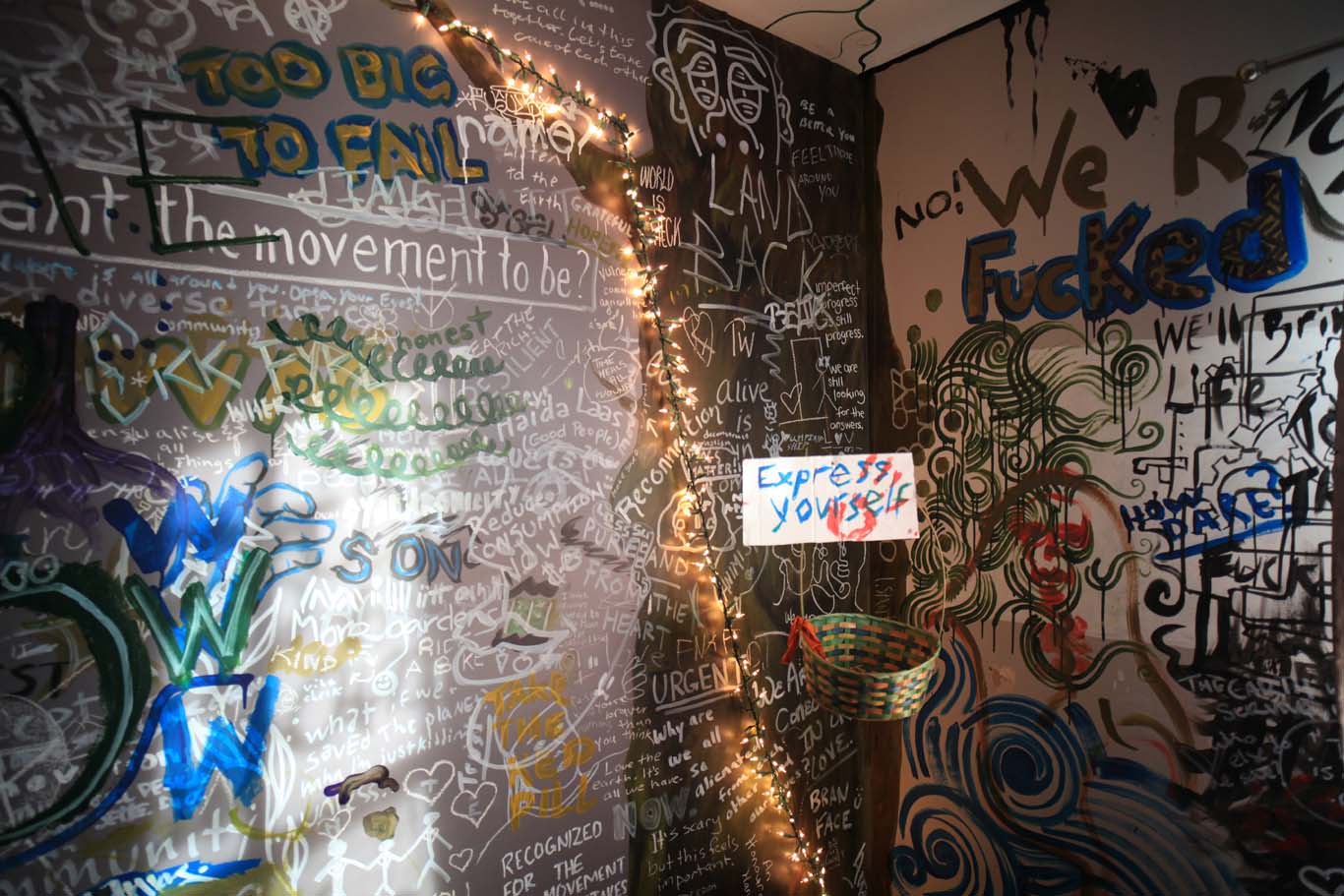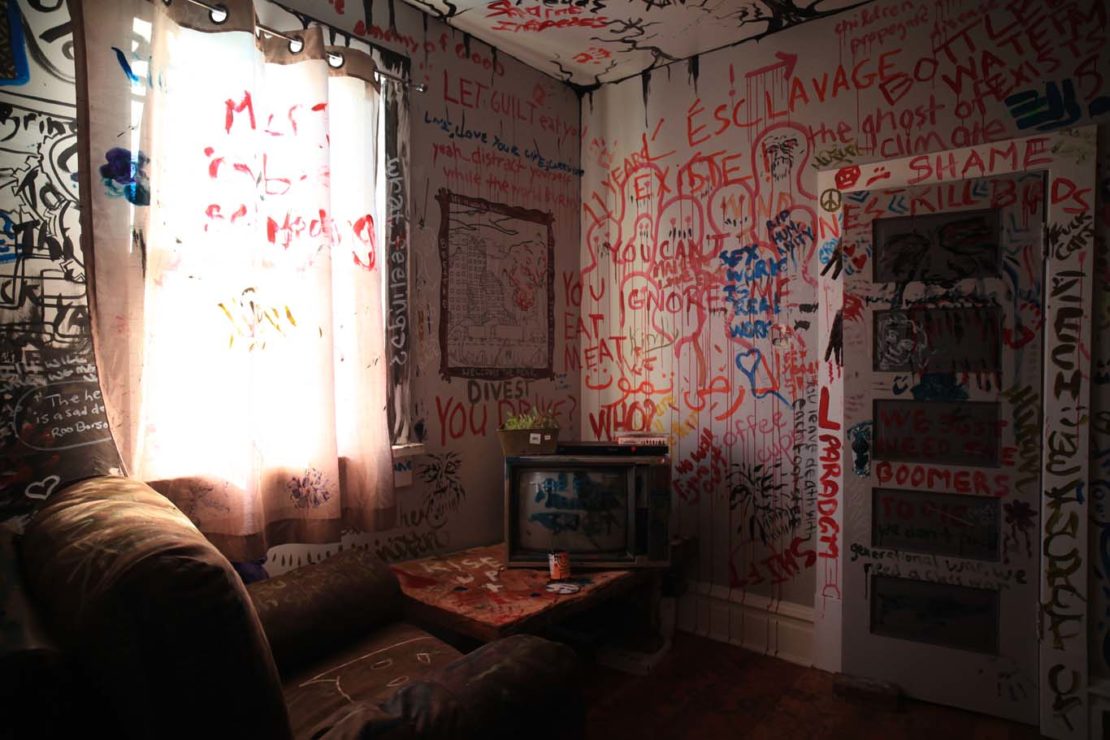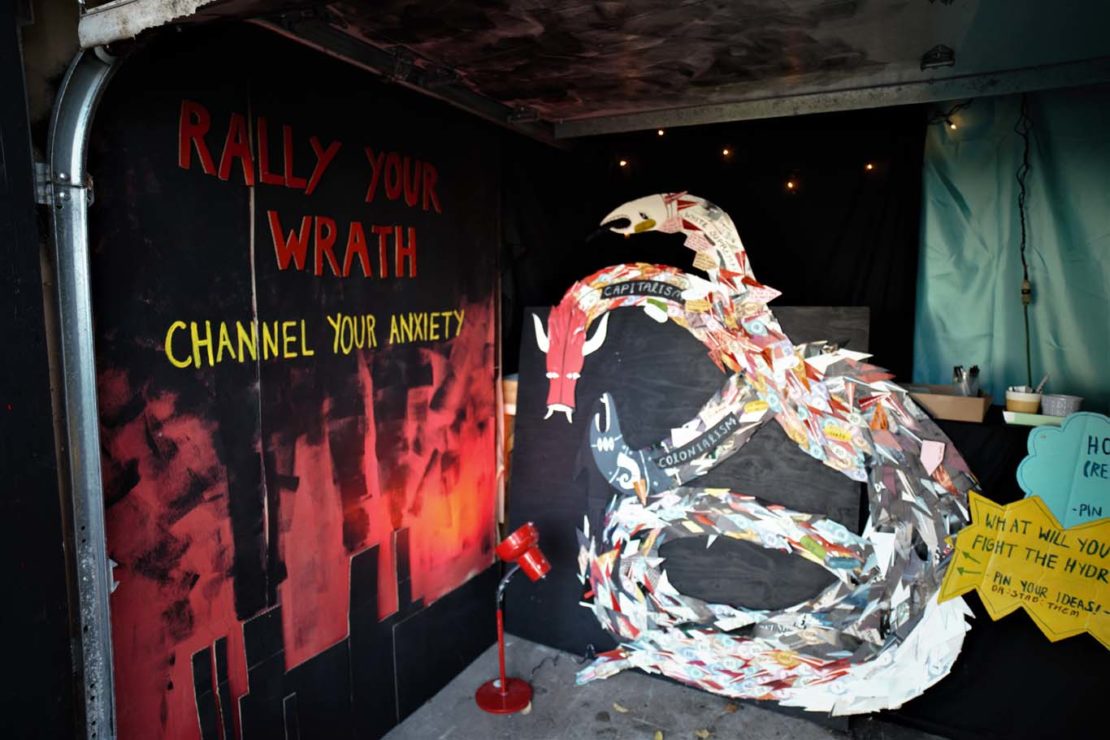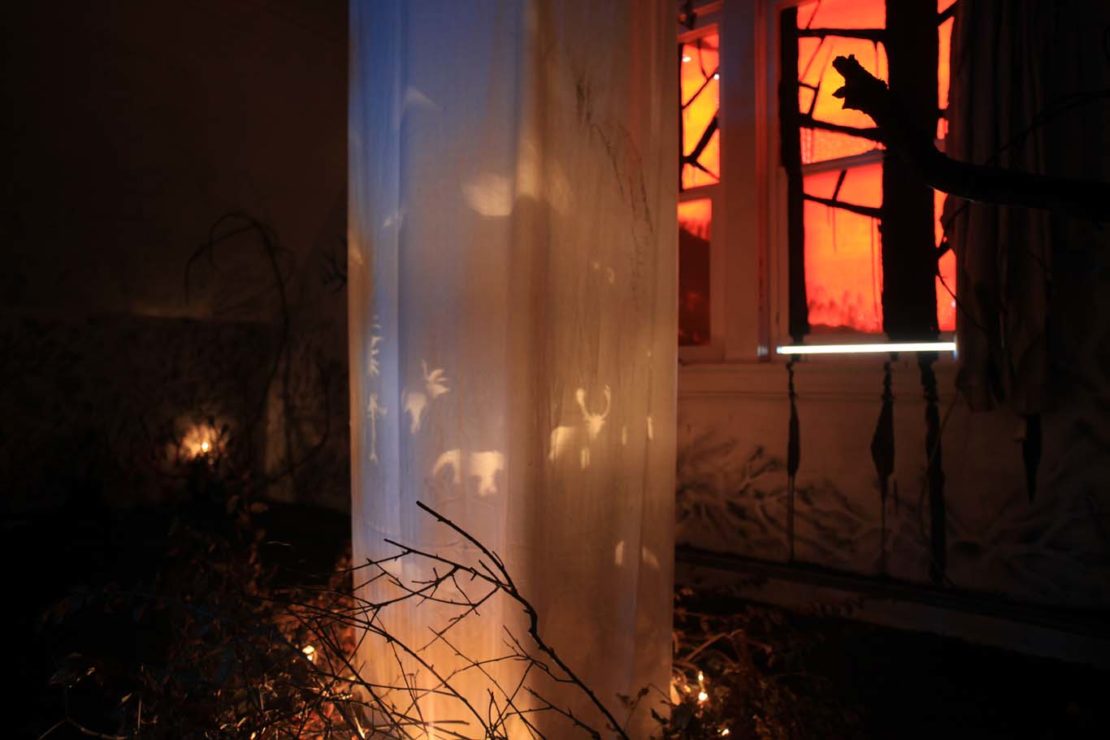2556 Fifth Street is slated for demolition in December, and the remains will be more colourful than most. For the first time in Victoria, local artists have transformed a residential property into an all-encompassing art installation about climate anxiety.
This project was proposed by UVic Teacher Education students, Kay Gallivan and Kate Brooks-Heinimann, and came to fruition with help from Aryze Development, Esquimalt High School students, and local artists.
The house was open to the public on Nov. 9, 10, 15, 16, and 17, but the closing night still looms ahead for those who haven’t seen it yet. Saturday, Nov. 30 will feature local bands Crosss, Special Noise, and OK Vancouver OK. Some art may be uninstalled by this point, but you can check out the house at its zenith through the 3D tour found on their website, wastelandclimateanxiety.com. If you are planning to check it out, keep in mind that the house is a sober zone and has accessibility restrictions.
The house hosted many events during those two weekends, including an opening ceremony with Cowichan Elder Della (Rice) Sylvester. Spoken word and music performances engaged visitors every evening the house was open. Workshops took place in the daytime, including a beadwork edging workshop lead by Métis artist Audie Murray and a hip hop and healing session with rapper Nostic.
Gallivan and Brooks-Heinimann began the UVic Teacher Education program in September 2019, and collaborated on this enormous undertaking to “raise awareness about the climate crisis in an accessible, creative, and artistic way.”
The project was inspired in part by Wreck City, a Calgary-based collective that transformed nine houses, three garages, and a greenhouse into an interactive art project before they were scheduled for demolition in 2013. Waste Land’s contributing artists watched the documentary of that experience, WRECK CITY: An Epilogue for 809, then applied their own perceptions of climate anxiety onto 2556 Fifth Street.
Some of the installations include a tidal wave of plastic water bottles, a mangled teddy bear with a video camera for an eye and a tablet for a belly that plays live surveillance footage, and a trash igloo in the backyard. Artists were encouraged to use found materials. Some work will be uninstalled before demolition, but some rooms will fall as they are.
UVic student Heidi Pridy worked on a shadow projection installation in collaboration with three other artists in an upstairs room that appeared to be the aftermath of a forest fire. On one wall they invited visitors to “tell the land how you feel” with charcoal sticks. Reflecting on the guiding theme, they said that climate anxiety “can be immobilizing when individualized,” and thinks that mobilization must be grounded in relationships to each other and to the land.
For the artists involved in the project, this installation was an opportunity to be vulnerable, and to create a space where people can feel less alone in the face of our global existential crisis.



